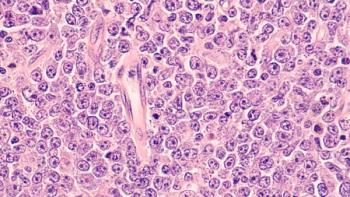
- August 2022
- Volume 16
- Issue 4
Normalize Palliative Care as Part of the Oncology Treatment Plan

Advanced practice providers play a critical role in increasing palliative care referrals.
Patients with cancer have significant needs that require basic and advanced palliative care services. The American Society of Clinical Oncology recommends palliative care as an essential element of medical oncology treatment.1 However, gaining access to these services can be challenging because of limited resources and barriers to care.
Agne et al examined provider and nursing perceptions of barriers to referral for outpatient palliative care.2 They identified that the additional time spent seeking outpatient palliative care in other networks represented a burden for many patients and therefore recommended embedding a palliative care provider within an oncology team to remove this barrier and provide better access to these services. The expertise from the palliative team is highly valuable; however, a lack of available resources may limit this approach. As a result, the authors recommended improved collaboration between the medical oncology and palliative care teams.
Within the Allegheny Health Network, we are fortunate to have palliative medicine specialists to whom we refer patients. However, our medical oncology geographic footprint is large, spanning 9 counties and 2 states. Resources are not consistently or immediately accessible at all our practice sites. In addition, referral of all patients who have any palliative care needs would quickly overwhelm the available specialist resources.
Therefore, the team sought to engage advanced practice providers (APPs), who have historically played a significant role in symptom management with this population.
Our network encouraged collaboration between the medical oncology division and the division of supportive care and palliative medicine to meet the palliative care needs of oncology patients. The team consisted of clinical and operational leaders from both divisions. Upon assessment of available resources, they established a plan for patients to have immediate access to both basic and advanced palliative care services. To facilitate that access, they decided to build a foundational palliative medicine training program within the medical oncology APP team. The APP team included nurse practitioners and physician assistants who practice across the medical oncology division. These APP team members had various backgrounds and skill sets relative to palliative care. Other key team members in nursing, social work, and navigation were also part of this initiative.
The goal of the program was to train a group of medical oncology APPs to meet primary palliative care needs at a 101 (primary) level and refer patients who needed palliative care services at a 102 (advanced) level to the palliative medicine specialists. To meet this goal, a call for champions was sent out to the medical oncology clinical team. From those clinics and hospitals who volunteered champions, staff were selected and assigned to each of our practice locations across the region. These champions served as subject matter experts for other team members in the medical oncology division. Additional palliative training was provided to the team by palliative medicine experts. The team also completed online modules within the Center to Advance Palliative Care platform. Furthermore, a select group of clinicians received additional training for crucial conversations with patients by attending the VitalTalk program.
In summary, this project has been helpful to normalize the concept that palliative services are a core component of the medical oncology patient care plan. We have engaged staff in this cooperative effort, and our future goals are to maintain and grow this program as well as evaluate its outcomes.
References
1. Ferrell BR, Temel JS, Temin S, et al. Integration of palliative care into standard oncology care: American Society of Clinical Oncology clinical practice guideline update. J Clin Oncol. 2017;35(1):96-112. doi:10.1200/JCO.2016.70.1474
2. Agne JL, Bertino EM, Grogan M, et al. Too many appointments: assessing provider and nursing perception of barriers to referral for outpatient palliative care. Palliat Med Rep. 2021;2(1):137-145. doi:10.1089/pmr.2020.0114
Articles in this issue
about 3 years ago
Dispelling Nutrition Myths for Patients With Cancerabout 3 years ago
Is a Health Care Price Transparency Revolution at Hand?about 3 years ago
Tackling the Adverse Events of Immunotherapyabout 3 years ago
USP <800>: Still a Work in Progress?about 3 years ago
Structured Onboarding Processes Boost Employee Retentionover 3 years ago
FDA Approves Liso-Cel for Second-Line Large B-Cell Lymphoma

















































































